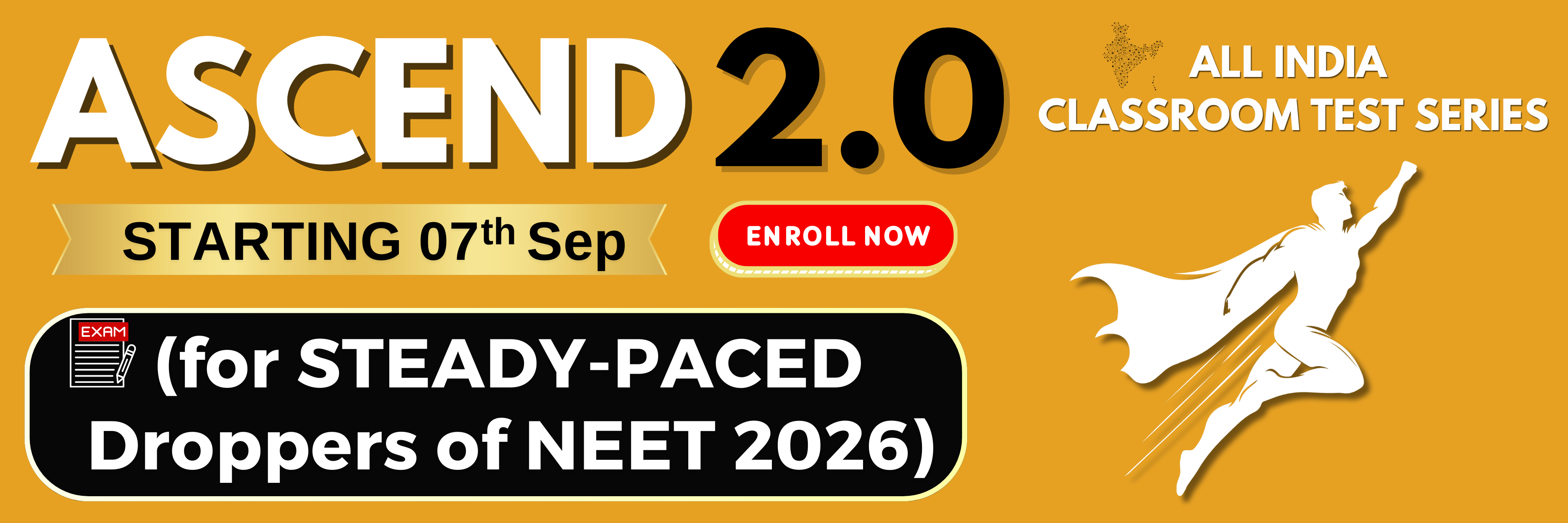Which of the following is incorrect?
1. Enzymatic activity is maximum at its optimim pH and temperature.
2. Enzymatic activity declines both below and above the optimum value.
3. Low temperatures destroys enzymatic activity
4. High temperatures destroys enzymatic activity
निम्नलिखित में से कौन गलत है?
1. एंजाइम की क्रियाशीलता इसके इष्टतम pH और तापमान पर अधिकतम होती है।
2. एंजाइम की क्रियाशीलता इष्टतम मान के ऊपर या नीचे होने से घट जाती है।
3. न्यून तापमान एंजाइम की क्रियाशीलता को नष्ट कर देता है
4. उच्च तापमान एंजाइम की क्रियाशीलता को नष्ट कर देता है
How many polypeptide subunits are present in Haemoglobin
(1)2
(2)1
(3)3
(4)None of these
हीमोग्लोबिन में कितनी पॉलीपेप्टाइड उपइकाियाँ उपस्थित होती हैं?
(A)2
(B)1
(C)3
(D) इनमें से कोई नहीं
Which of the following is incorrect?
1. The chemical or metabolic conversion refers to a reaction.
2. The chemical which is converted into a product is called an enzyme.
3. Proteins with three dimensional structures including an active site is called enzyme.
4. Enzymes convert a substrate into a product.
निम्नलिखित में से कौन सा गलत है?
1. रासायनिक या उपापचय रूपांतरण एक अभिक्रिया को संदर्भित करता है।
2. जिस रसायन को उत्पाद में परिवर्तित किया जाता है उसे एंजाइम कहा जाता है।
3. एक सक्रिय स्थल सहित त्रिआयामी संरचनाओं वाले प्रोटीन को एंजाइम कहा जाता है।
4. एंजाइम एक क्रियाधार को एक उत्पाद में परिवर्तित करते हैं।
The least abundant element present in human body is
1. Oxygen
2. Carbon
3. Nitrogen
4. Hydrogen
मानव शरीर में उपस्थित सबसे कम प्रचुर तत्व है:
1. ऑक्सीजन
2. कार्बन
3. नाइट्रोजन
4. हाइड्रोजन
The quaternary structure of a protein:
(1) Consists of 4 subunits - hence the name quaternary
(2) Is unrelated to the function of the protein
(3) Both (a) and (b)
(4) Depends on the 1° structure of subunits
एक प्रोटीन की चतुष्क संरचना:
(a) 4 उपखंड से मिलकर बनता है - इसलिए नाम चतुष्क
(b) प्रोटीन के कार्य से असंबंधित है।
(c) दोनों (a) और (b)
(d) उपइकाई की 1° संरचना पर निर्भर करता है।
Adult human haemoglobin consists of:
(1) 2 subunits (á, á)
(2) 2 subunits (â, â)
(3) 4 subunits (2á, 2â)
(4) 3 subunits (2á, 1â)
वयस्क मानव हीमोग्लोबिन में.............सम्मिलित हैं:
(a) 2 उपइकाई (á, á) (b) 2 उपइकाई (â, â)
(c) 4 उपइकाई (2á, 2â) (d) 3 उपइकाई (2á, 1â)
Lecithin is:
(1) Phospholipid
(2) Carbohydrate
(3) Protein
(4) Amino acid
लेसिथिन है:
(a) फॉस्फोलिपिड (b) कार्बोहाइड्रेट (c) प्रोटीन (d) अमीनो अम्ल
Which one is false?
(1) Fatty acids may be unsaturated (with one or more C = C bonds) or a saturated (without double bonds)
(2) Fatty acid(s) may be esterified with glycerol forming monoglyceride, diglyceride and then triglyceride
(3) Some tissues especially neural tissues have lipids with very simple structures
(4) Fats and oils are triglycerides
कौन सा असत्य है?
(a) वसा अम्ल असंतृप्त हो सकता है (एक या अधिक C = C बंध के साथ) या एक संतृप्त (द्वि बंध के बिना)
(b) वसा अम्ल ग्लिसरॉल के साथ एस्टरीकृत होकर, मोनोग्लिसराइड, डाइग्लिसराइड बनाने और फिर ट्राइग्लिसराइड बनाते हैं।
(c) कभी-कभी विशेष रूप से तंत्रिका ऊतकों के वसा में बहुत सरल संरचनाएं होती हैं।
(d) वसा और तेल ट्राइग्लिसराइड्स होते हैं।
Which one of the following is the diagrammatic representation of a nucleotide?
(a)


निम्नलिखित में से कौन सा एक न्यूक्लियोटाइड का आरेखीय निरूपण हैं?
(a)


Which of the following organic compounds is the main constituent of Lecithin?
1. Arachidonic acid
2. Phospholipid
3. Cholesterol
4. Phosphoprotein
निम्नलिखित में से कौन सा कार्बनिक यौगिक लेसिथिन का मुख्य घटक है?
1. ऐराकिडोनिक अम्ल
2. फॉस्फोलिपिड
3. कोलेस्टेराल
4. फॉस्फोप्रोटीन







